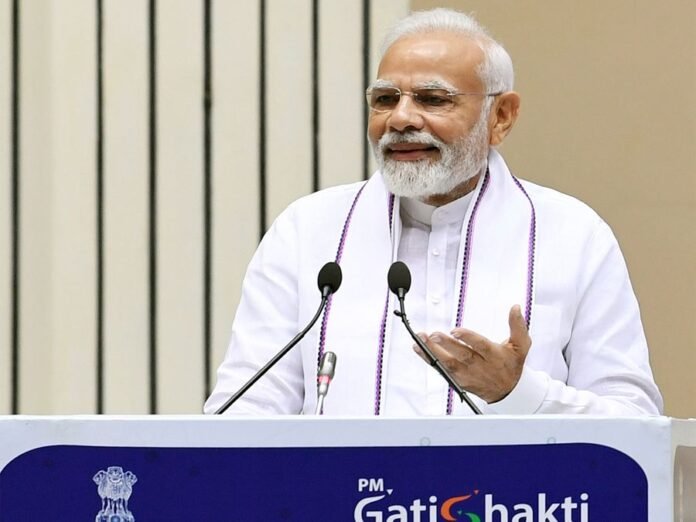India’s National Logistics Policy (NLP) just marked its third anniversary on September 17, 2025, and it’s already making big waves in the country’s supply chains. Launched by Prime Minister Narendra Modi back in 2022, this policy has sparked major reforms to boost efficiency and cut costs in logistics across the board. The Department for Promotion of Industry and Internal Trade (DPIIT) under the Ministry of Commerce & Industry shared these updates in a recent press release, highlighting how NLP ties into the PM GatiShakti National Master Plan.
At its core, the National Logistics Policy aims to slash logistics costs down to global levels, push India’s ranking in the World Bank’s Logistics Performance Index (LPI) into the top 25 by 2030, and build a smart, data-powered system for smoother operations. Over the last three years, it has driven changes in digital tools, skill-building programs, better policies, and smarter infrastructure planning— all to make domestic and international supply chains faster and cheaper.
One standout success is the Unified Logistics Interface Platform (ULIP). This digital hub connects over 30 systems securely via APIs and has handled more than 160 crore transactions by August 2025. Then there’s the Logistics Data Bank, which tracks over 75 million export-import (EXIM) containers at 101 Inland Container Depots (ICDs), giving real-time updates to speed up everything from shipping to delivery.
The Logistics Ease Across Different States (LEADS) index keeps things competitive by rating states and union territories on their logistics performance. The 2024 version added factors like corridor access and terminal speed, while 2025 brought in digital logistics and sustainability checks. Thanks to efforts like these, India climbed to 38th in the global LPI rankings.
Innovation gets a boost too through the Logistics Excellence, Advancement, and Performance Shield (LEAPS). It rewards small businesses, startups, and academics for green ideas and strong Environmental, Social, and Governance (ESG) practices. DPIIT is also teaming up with the National Council of Applied Economic Research (NCAER) on a logistics cost study started in 2024. This data-driven project, now wrapping up, will offer practical tips to lower expenses and shape future policies.
Big projects like Multi-Modal Logistics Parks (MMLPs) are transforming transport by blending road, rail, and more, with extras like customs clearance and cold storage. To tackle red tape, the Service Improvement Group (SIG) sorts out policy hurdles, and the E-Logs portal has onboarded 35+ associations, fixing 100 out of 140 stakeholder issues.
Sustainability is a hot focus. The Indian Institute of Management Bangalore rolled out the Transportation Emissions Measurement Tool (TEMT), a cloud platform following ISO 14083 standards to track emissions. Logistics firms get nudged toward green practices and renewable energy to build eco-friendly supply chains.
Skills training has exploded—over 100 universities now offer logistics courses, and more than 65,000 professionals got certified from 2023 to 2025 with new qualification packs. The Centre of Excellence for City Logistics at SPA Bhopal trained 100+ officials, while a tie-up with GatiShakti Vishwavidyalaya launched degree programs in logistics. Plus, 250+ workshops for officials and online courses on iGoT make learning accessible.
The Sectoral Policy for Efficient Logistics (SPEL) tailors plans for key industries like coal, cement, steel, food processing, and pharmaceuticals. It pushes multimodal transport and smart decisions based on data. So far, the Coal Logistics Policy is live, Cement SPEL is finalized, and drafts for steel, fertiliser, and food sectors are in the works.
DPIIT’s study with GIZ on boosting women’s roles in logistics is under review, aiming for more gender balance. For cities, new guidelines for City Logistics Plans (CLPs) target less traffic, lower pollution, and cheaper urban freight, now feeding into state plans.
On the state level, 27 states and union territories have their own logistics policies, 14 are drafting action plans, and 19 give logistics industry status for tax perks. Nine more policies are in draft, with pushes to finalize them soon.
Sure, challenges like infrastructure gaps, regulatory mismatches, and digital know-how for small operators persist. But the government is all in with a “Whole of Government” push under PM GatiShakti, leaning on partnerships, public-private ties, and fresh funding ideas to create seamless, integrated logistics across India.
Stay informed on all the latest news, real-time breaking news updates, and follow all the important headlines in world News on Latest NewsX. Follow us on social media Facebook, Twitter(X), Gettr and subscribe our Youtube Channel.



